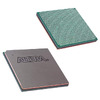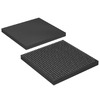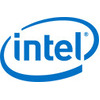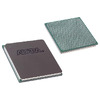Manufacturer Part Number
EP1S25F1020C7N
Manufacturer
Intel
Introduction
Intel's EP1S25F1020C7N is part of the Stratix® series, implemented as an embedded Field Programmable Gate Array (FPGA).
Product Features and Performance
High-density programmable logic
Supports complex digital systems
Advanced processing capabilities
High-performance, multi-gigabit transceivers
Dedicated DSP blocks for high-speed processing
Memory blocks for efficient data storage and retrieval
Supports system-level integration through embedded processors
Abundance of programmable logic elements and resources
Product Advantages
Flexibility in design and application due to programmable nature
Enables rapid prototyping and quicker time-to-market for designs
Potential for reuse in multiple designs
Can serve as a hardware platform for experimenting with new algorithms or processing techniques
Key Technical Parameters
Number of LABs/CLBs: 2566
Number of Logic Elements/Cells: 25660
Total RAM Bits: 1944576
Number of I/O: 706
Voltage Supply Range: 1.425V to 1.575V
Surface Mount technology allows for a smaller form factor and intensive board designs
Operating Temperature Range: 0°C to 85°C
Quality and Safety Features
Industrial standard compliance
Rugged design for operation within specified temperature ranges
Compatibility
Designed to integrate with various peripheral components and interfaces given wide I/O range
Software support for design and integration
Application Areas
Ideal for high-end communications, industrial, medical, and military applications where complex logic and high-speed signal processing are essential
Product Lifecycle
Obsolete status indicates the manufacturer no longer produces the FPGA
Replacement or upgrade options may be available from the same series or newer FPGA product lines
Several Key Reasons to Choose This Product
Advanced multi-gigabit transceivers allow for high-speed communication which is crucial in data-intensive applications
Large number of configurable logic elements and cells enable the FPGA to accommodate hefty and complex tasks efficiently
Robust design ensuring operation under a broad range of industrial temperatures increases reliability
Compatibility with other components and long-standing reputation of Intel for producing quality semiconductor devices
Although obsolete, may still be the best choice for certain legacy systems where newer models cannot be implemented without significant redesign



 EP1S25B672C7ESAltera (Intel)
EP1S25B672C7ESAltera (Intel) EP1S25F1020
EP1S25F1020 EP1S20F780I6NIntelIC FPGA 586 I/O 780FBGA
EP1S20F780I6NIntelIC FPGA 586 I/O 780FBGA